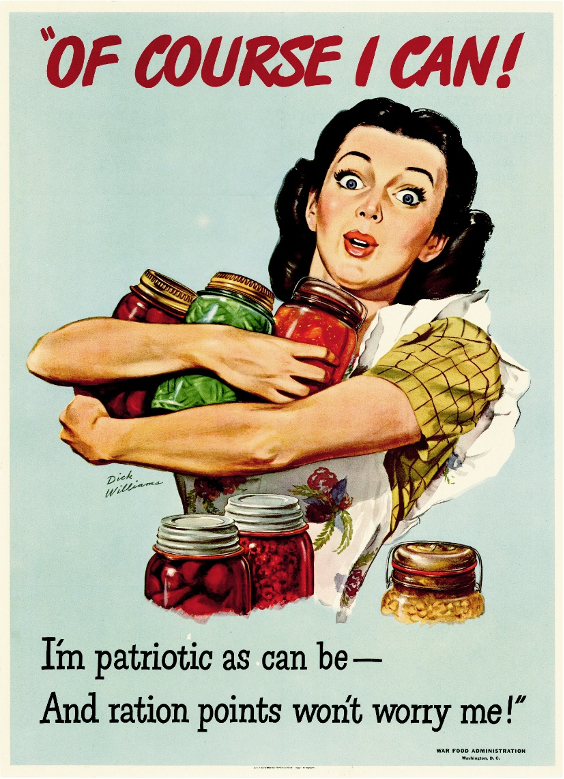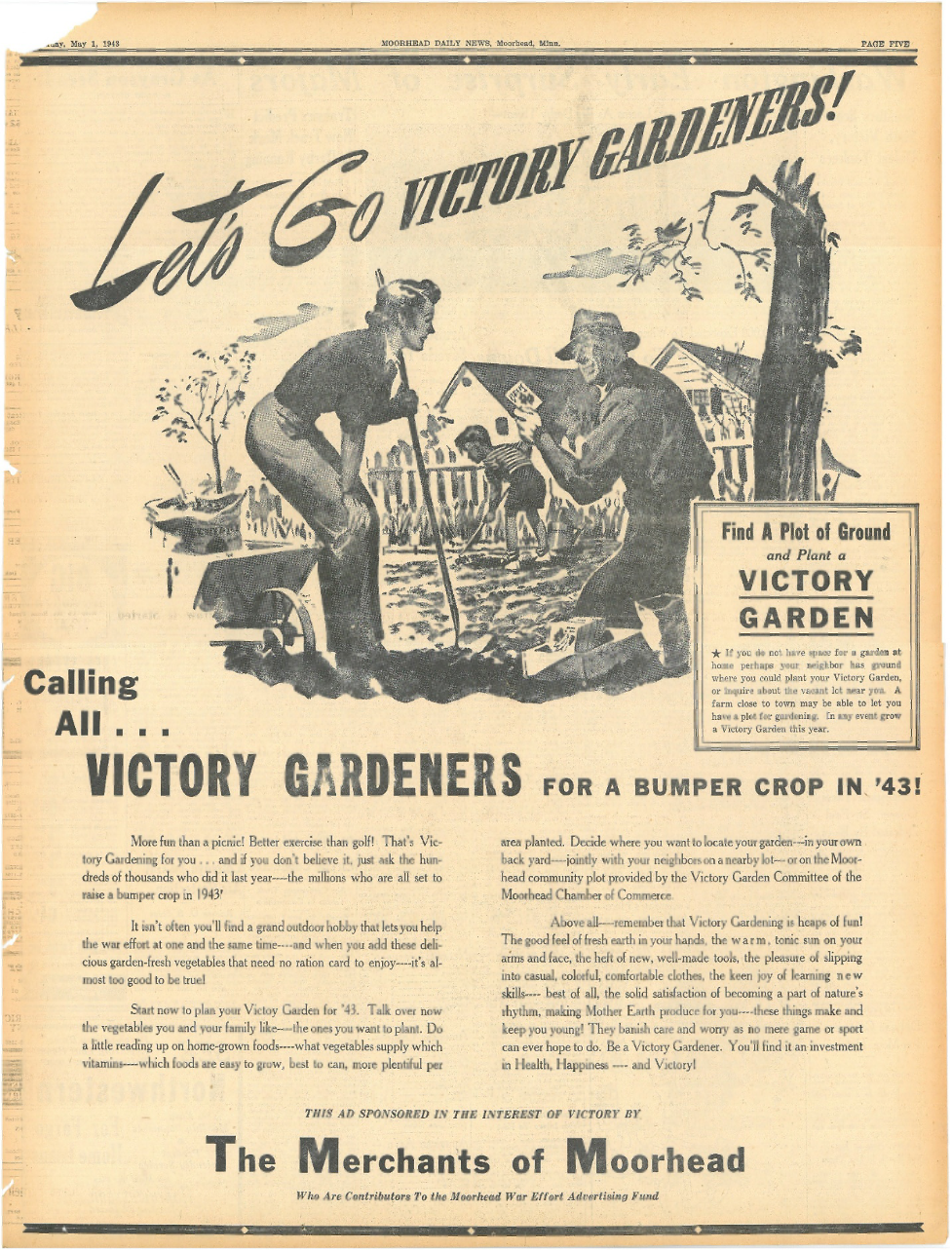Clay County Histories
Markus Krueger | Program Director HCSCC
When the USA entered World War II in December of 1941, we knew we needed to increase our country’s food production fast. So our government dusted off the old Liberty Garden program that was so successful in the First World War, rebranded them as Victory Gardens, and asked all Americans to plant fruits and veggies in home or community gardens.
How did gardening help win World War II? Here’s five ways.
Victory Gardens fed people at home so our farmers could feed our military. The USA had 16 million soldiers, sailors, airmen, and marines who needed three meals daily. In order to ship those crops to our military, Americans were asked to do more to feed themselves by turning flower gardens into veggie gardens and converting some lawn into food production. Barnesville and Moorhead were among the countless towns who organized community garden plots for people who didn’t have their own yard.
It worked. In 1943, an estimated 1 in 3 vegetables in America were grown in home Victory Gardens. Eating food from our own gardens allowed our farmers to send more food to feed our military.
Victory Gardens allowed American farmers to send food to war-torn areas around the world. Our allies in the United Kingdom, the Soviet Union, and China needed help from American and Canadian farmers to feed their people and their militaries. As we started to win the war, the necessity for food became greater because we needed to feed the hungry people of the Philippines, France, the Netherlands, and other places that were cruelly and intentionally starved by our enemies. And as soon as Nazi Germany and Imperial Japan surrendered, we filled their bellies and helped them rebuild.
Food grown at home freed up ships, trains, and trucks to be used for war jobs. Trains and trucks that would normally be bringing tomatoes from California to Minnesota were instead transporting soldiers and military equipment during the war. If you want tomatoes, you better grow them in your yard.
Victory Gardens grew nutritious food at home when some food was rationed or scarce. Some foods like meat and sugar were in short supply during the war. Fresh fruits and veggies were never rationed in the USA, but canned fruits and veggies certainly were. We needed those tin cans to make airplanes! So grow your own and preserve them in glass jars.
In 1944, Clay County Extension Agents helped 2,860 families preserve the fruits and vegetables they grew in their Victory Gardens, an astonishing number considering Clay County had a population of 25,337 in 1940. These families preserved 237,184 quarts of fruit and 245,238 quarts of veggies, and they brined another 248,292 quarts. If you laid all those quarts end to end, you would have a line of mason jars stretching 78 miles from Moorhead to Grand Forks.
Victory Gardens gave everyone a way to help the war effort. All Americans wanted to help win the war, but not everybody was the right age or gender to join the Army, Navy, or Marine Corps. Planting a Victory Garden was a delicious and healthy way to help save the world.



